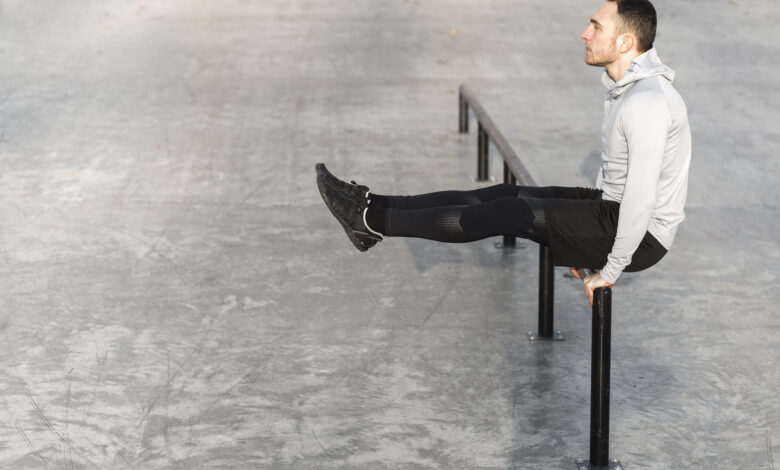On Your Feet Too Long? How Prolonged Standing Can Affect Your Body

Standing may seem like a natural and harmless activity, but for many people, spending long hours on their feet can have significant consequences on overall health. Whether it’s for work, daily chores, or social gatherings, prolonged standing can take a toll on various parts of the body, especially the muscles, joints, and circulatory system. In this post, we will explore the potential effects of prolonged standing and share practical tips to mitigate these risks.
The Physical Toll of Prolonged Standing
1. Muscle Fatigue and Discomfort
Standing for extended periods can cause muscles to become fatigued. When you stand still, your muscles in the legs, back, and core are constantly engaged to maintain your posture. This sustained contraction can lead to discomfort, stiffness, and eventually muscle strain. The muscles in the calves, thighs, and lower back are particularly prone to feeling the effects, as they are tasked with supporting your body weight for hours on end. Over time, muscle fatigue can even lead to long-term discomfort or chronic pain.
2. Lower Back Pain
The most common complaint among people who stand for prolonged periods is lower back pain. This is primarily due to the pressure that standing places on the spine and the surrounding muscles. When standing for long periods, especially without shifting weight or moving, the spine is subjected to more compression, which can lead to discomfort, pain, and stiffness. The lack of movement also prevents the spine’s natural curvature from being supported correctly, contributing to poor posture and added strain.
3. Joint Stress and Swelling
Joints, particularly in the knees and hips, can also bear the brunt of prolonged standing. The constant pressure from standing still can lead to joint compression, which may result in pain or inflammation. For individuals who are already prone to joint conditions like arthritis, prolonged standing can exacerbate symptoms, making them feel more pronounced and painful. Additionally, standing for long hours can cause swelling in the lower limbs, particularly in the feet, ankles, and knees, because gravity encourages fluid to pool in these areas.
4. Circulatory Issues
Perhaps one of the most significant risks of prolonged standing is its effect on the circulatory system. When standing still for extended periods, blood circulation can become sluggish, particularly in the lower limbs. This can result in poor blood flow back to the heart, leading to swollen legs, varicose veins in Tulsa, and the risk of developing blood clots. In extreme cases, standing for long hours without movement can lead to a condition known as orthostatic hypotension, where blood pressure drops, causing dizziness or fainting.
5. Foot Problems
Your feet are arguably the most impacted by prolonged standing. The constant pressure on the feet can lead to several issues, including plantar fasciitis (inflammation of the tissue connecting the heel to the toes), bunions, calluses, and corns. Without proper footwear or regular movement, the arch of the foot can also flatten over time, leading to more discomfort and even long-term deformities.
Managing the Effects of Prolonged Standing
While standing for long periods is often unavoidable in many professions (e.g., retail workers, healthcare professionals, or factory workers), there are steps you can take to minimize its negative effects and ensure that your body remains as healthy as possible.
1. Take Regular Breaks
One of the simplest and most effective ways to prevent the strain of prolonged standing is to take regular breaks. Aim to change your position every 30 to 60 minutes. A quick walk around or shifting your weight from one foot to the other can give your muscles a break and help improve circulation.
2. Wear Supportive Footwear
The right footwear is essential when standing for long periods. Choose shoes with arch support and cushioning that absorb impact. Avoid wearing high heels or shoes that lack support, as they can exacerbate foot pain and lead to more serious conditions. Insoles designed for comfort and support can also provide additional relief.
3. Use Anti-Fatigue Mats
If you have a job that requires standing for long stretches, using an anti-fatigue mat can help reduce the stress on your feet, legs, and back. These mats are designed to cushion the body and provide a softer surface to stand on, which helps alleviate the pressure on your joints and muscles.
4. Maintain Good Posture
Standing with poor posture can lead to a variety of musculoskeletal issues. To avoid back pain and fatigue, stand tall with your shoulders back, your spine aligned, and your knees slightly bent. Distribute your weight evenly on both feet and avoid locking your knees or slumping. Engaging your core muscles can also help support your back.
5. Stretch and Move
Taking a moment to stretch and move your body during breaks can greatly improve your comfort levels. Stretching the calves, hamstrings, and lower back can help alleviate muscle tightness and prevent strain. Incorporating light movements, such as walking or gentle stretching, can boost circulation and reduce the risk of joint pain and swelling.
6. Strengthen Your Legs and Core
Building strength in your leg muscles, particularly your calves, quadriceps, and hamstrings, as well as your core muscles, can make standing for long periods less tiring. Strengthening exercises, like squats, lunges, and calf raises, can help your muscles support your body more efficiently. Additionally, improving your posture through core exercises, such as planks and back extensions, will support your spine and prevent discomfort.
In Conclusion
While standing for prolonged periods is a necessary part of many jobs, it doesn’t have to come with discomfort and long-term damage. By understanding the effects of prolonged standing on the body and implementing strategies to reduce its impact, you can keep your body healthy, reduce pain, and improve overall well-being. Whether through footwear choices, regular breaks, or simple exercises, taking proactive steps can make all the difference in how your body handles long hours on your feet.



